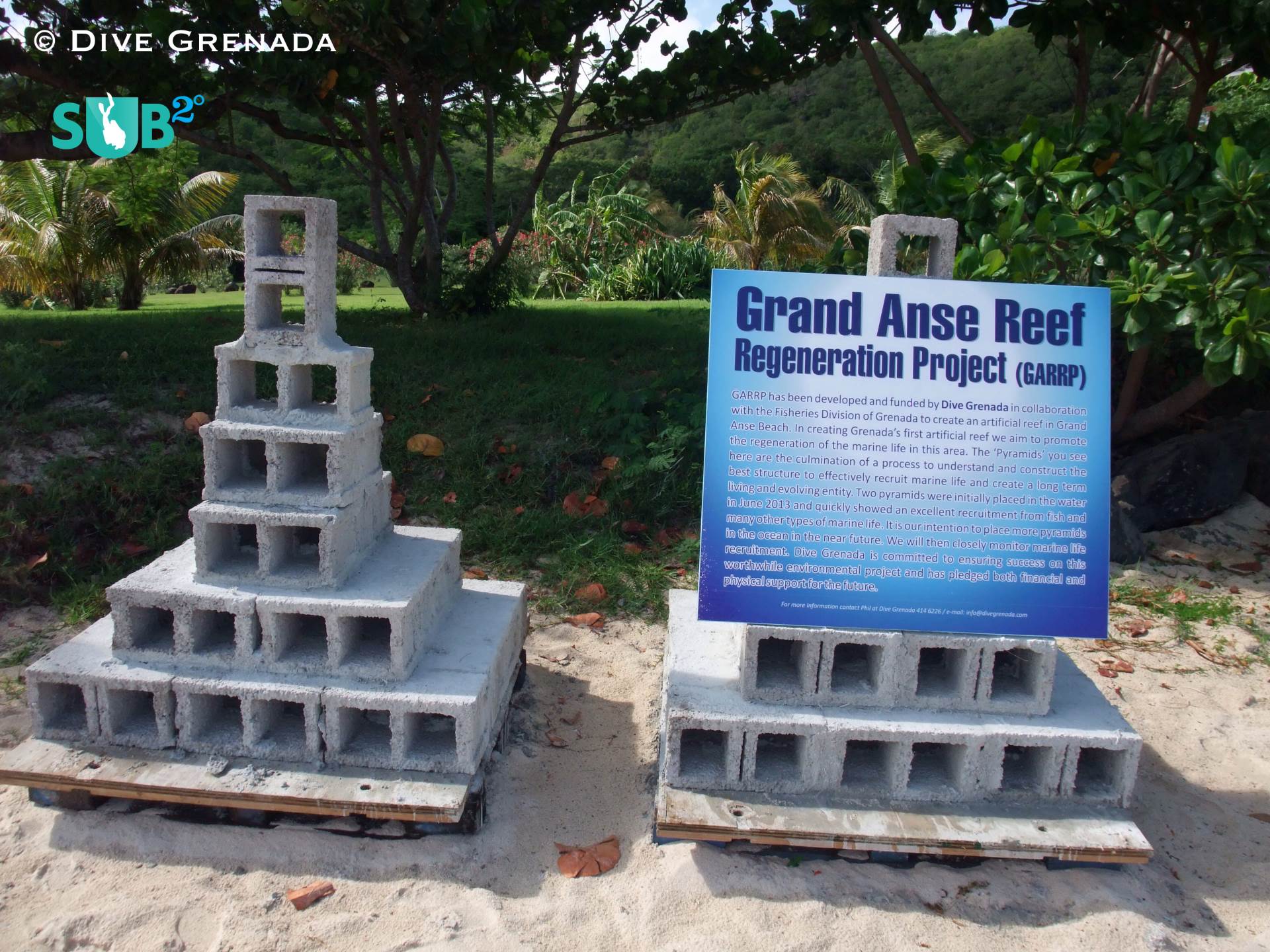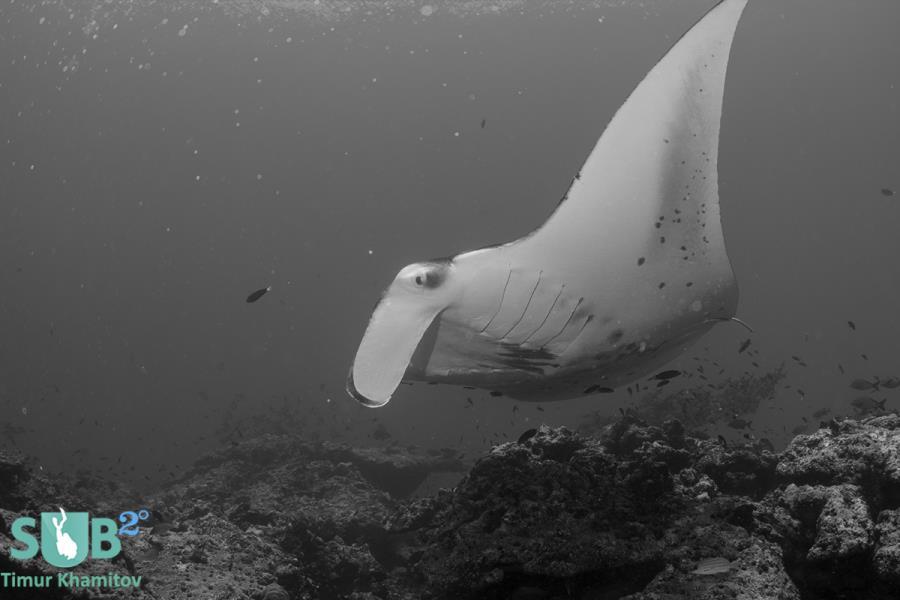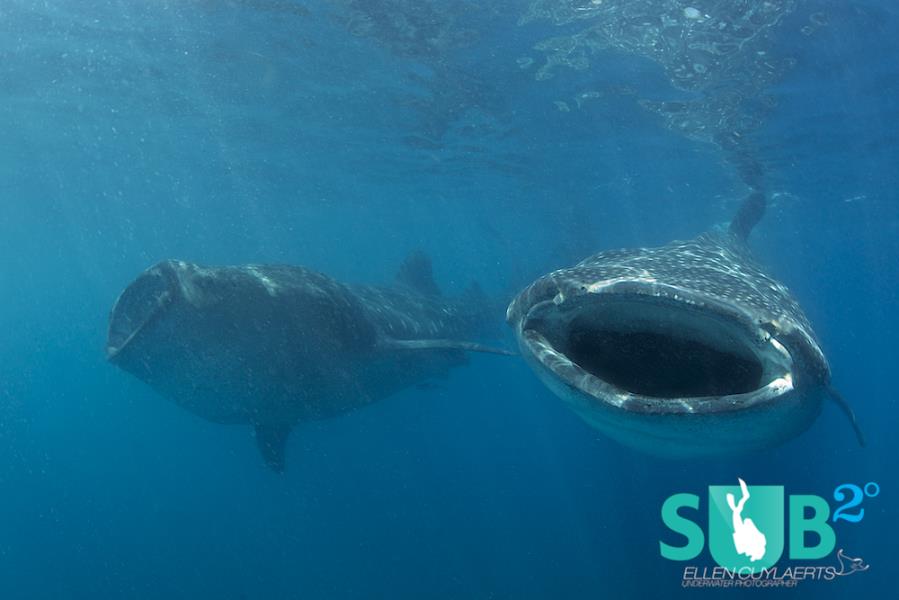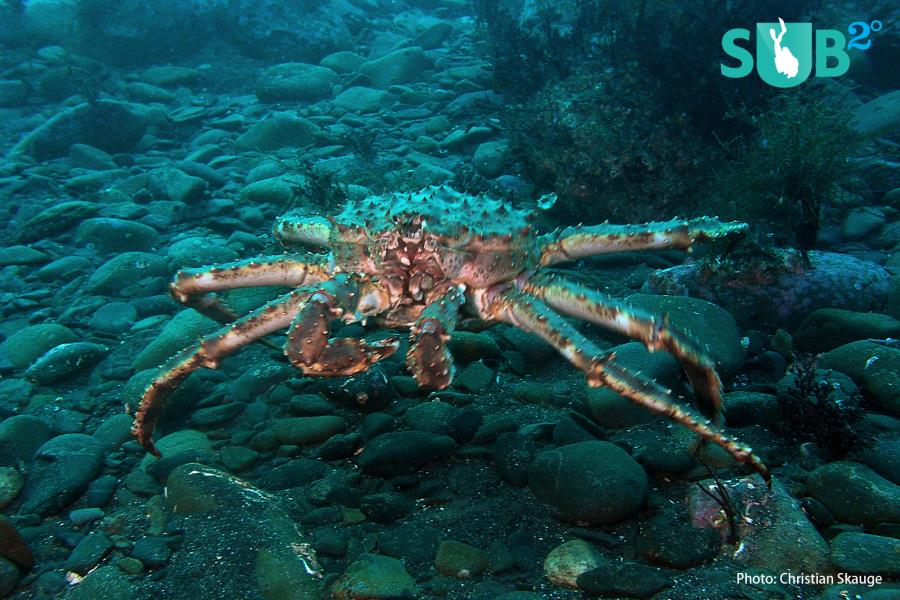-

Grand Anse Reef Regeneration Project
The pyramids prior to placement in Grand Anse Bay. The concrete structures are built on the beach before being floated out and carefully positioned. -

Dive Grenada Artificial Reef Project in Grenada
These were the first two artificial Reef Pyramids placed in the Grand Anse Reef Regeneration Project (GARRP) in May 2013, this video was taken 2 months later. The scheme is being funded and built by Phil Saye of Dive Grenada. The rope & float is to act as an alternative medium to attract marine life.
Innovative Reef Restoration On Grenada
Visitors to the beautiful south Caribbean island of Grenada will be familiar with the award-winning Grand Anse beach. The stunning white-sand bay stretches for miles along the Caribbean coastline of St. George's, the main area for tourism, restaurants, and accommodation. Grand Anse Bay is a delightful oasis for relaxation, activities, and watersports. However, while the topside landscape is enchanting, all is not well underwater. Dive Grenada, a PADI 5* Resort based on Grand Anse, has noticed major environmental impacts over their last ten years in operation.
Grand Anse Reef Regeneration Project on Grenada
From this realization, The Grand Anse Reef Regeneration Project (GARRP) was born. Phil Saye, owner of Dive Grenada, conceptualized the project in January 2013. After a successful ten years operating on Grenada, he wishes to invest back into the community with a philanthropic investment in reef regeneration.
Grand Anse Bay reefs have suffered multiple storm damage events, sedimentation and poor water quality in previous years, leading to the current state of degradation. The Government of Grenada has joined the world community in acknowledging the need to conserve these sensitive and valuable environments by creating Marine Protected Areas on Grenada. Installing an artificial reef in Grand Anse Bay will provide the necessary structure for the sustainable recruitment of marine life, and may even increase the original bio-diversity in this area.
Artificial Reef - Design & Implementation
The underwater topography in Grand Anse Bay consists of small reef heads. GARRP will introduce artificial reef substrates to expand and link these existing natural resources. The artificial reef structures use a pyramid design, constructed from concrete blocks. Phil said that he is using this design, as it is "the most stable platform, providing maximum surface area for the macro life to grow on, and giving fish a great place to make their home. I also had to consider cost and the availability of locally sourced materials and labor".
After building the pyramid on Grand Anse beach, divers and assistants launch it on a floating "ski", towing it out over a sandy-bottomed area. The pyramid is then carefully submerged and guided into a predetermined site. This precise method allows close placement near existing reef structures and alleviates any risk of further damage.
Over fifty-nine countries throughout the world have used similar concrete structures to regenerate coral reef areas; they recorded exceptional results, especially from within the Caribbean. In June 2013, Dive Grenada placed two test pyramids in the area where GARRP plans to develop the new artificial reef. Encouragingly, within three months they had shown high levels of recruitment, providing enough evidence to go forward with the pilot study.
Dive Grenada Pilots The Way
The pilot study includes a survey of the area by marine biologists to make sure the project is feasible and sustainable. By the end of November 2013, twelve pyramids will have been positioned on the south end of Grand Anse Bay, in a depth of 10-20 feet of water. Dive Grenada will closely monitor them for recruitment of marine life. Qualitative and quantitative measures will guide the placement of future pyramids, using the local marine biologists' expertise.
Dive Grenada reports that initial indications of recruitment have been very promising, showing a diverse presence of marine life on the structures. Coral growth will take a season to propagate, but encrusting sponges, algae, and other invertebrates have already moved into the structures. Dive Grenada has recorded over twelve fish species - this is significant, as the fish represent an essential link in the building blocks of a coral reef environment.
Education and Conservation in Grenada
Education is key to protecting reef environments worldwide. GARRP, spearheaded by the team at Dive Grenada, is placing great importance on the education of local school children, through snorkeling trips to the artificial reef. Phil said, "We want to provide the opportunity to reach the younger generation and empower them as stewards of the natural resources. In addition, the project will likely have a global educational impact, through educating tourists on the need for reef conservation". A marine eco-trail, where divers and snorkelers can follow the structures underwater, is one of the ultimate goals of GARRP.
How you can help GARRP?
Phil Saye and Dive Grenada are providing funding, expertise, and labor for the pilot study phase of the project, as well as continued support and monitoring for the duration of the project. Dive Grenada have committed a minimum of EC$10,000 per annum for the next 10 years, regardless of any external funding. This ensures that the project always moves forward and gains momentum.
In addition to the long-term commitment from Dive Grenada, GAARP will seek funding from private donations, non-profit organizations, and funds for conservation of the maritime environment. The low construction cost of the pyramid design enables individuals and small businesses to provide sponsorship of the project - this is where you can help.
Check out GARRP's Facebook page and get involved today!
Featured Posts
-

Indonesia Bans Manta Fishing,...
Analyzing manta conservation in the context of marine conservation as a whole. (Part 1 of the series)
-

Isla Mujeres & The Whale Shar...
Every year, between June and September, hundreds of whale sharks can be found in the deep waters northeast of Isla Mujeres, Mexico.
-

King Crab Invasion
Thanks to Discovery Channel’s popular «Deadliest Catch» TV series, the red king crab has become known across the globe. Native to the north Pacific, this armored behemoth has invaded Norwegian waters and is considered a dang...


Load more comments